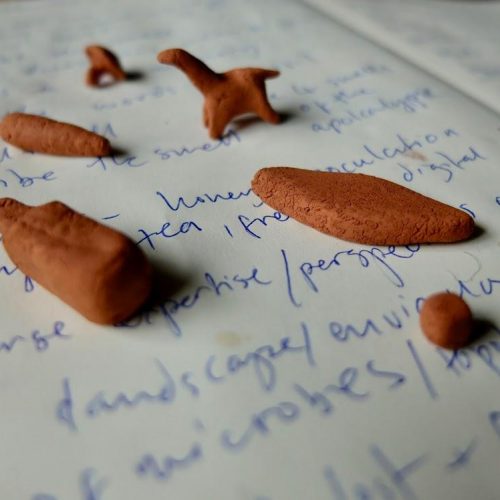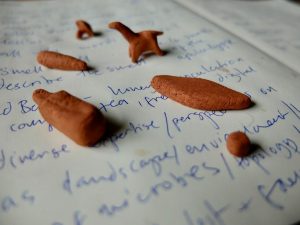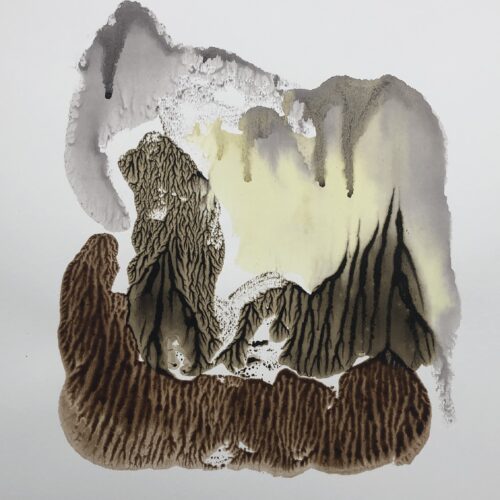
Art & soil: Part 2
Speaking Soil: with Roving Microscope and Grizedale Arts
…Continued. In his previous post, Dan outlined his recent participation with Grizedale Arts anniversary weekend, and an opportunity to volunteer with them. In this blog he gives more detail about what the weekend revealed about science, ideas, stories and cultures of soil.
The themes of this activity can be explored further through the Arts & Environment program of learning resources, visits and e-meets developed for OCA by Dan and Melissa. Find out more on the student discuss forum here.
Soil chat
It was good to be back at Grizedale Arts, having first done an artist residency there in 2005. This time our focus was on soil. I invited Roving Microscope as felt they would be sympathetic to Grizedale Arts’ ethos and the unique upland situation of Low Parkamoor farm. I wanted to draw on their knowledge and expertise of compost and soil microscopy, to help me think about the subject and materiality of soil in story-telling.
We discussed how different cultures and histories understanding of ‘good and bad soil’, before glass and microscopy developed scientific understanding of microorganisms, about mythologies of ghosts, culture and knowledge attached to the land, and more specifically compost, earth, clay, loam, silt and sand.

We asked questions such as,
- ‘How does soil speak throughout history and culture?’
- ‘What is inscribed in soil?’
- ‘How does soil speak?’
- ‘How can soil be sampled without technology — for example, through tasting and smelling?’
We got interested in soil language and vocabulary and how this varies in different places. We thought about soil’s interconnectedness with livestock – hefted sheep, magic, mythology, pilgrimage. About sampling and cultures being transported from place to place… For example clay microbes being introduced to improve texture of clay from one site to another.
This led to questions such as,
- How does soil support culture?
One visitor, Bram Thomas Arnold arrived just in time for soup and sourdough. He talked about his plans to bring climate change scientists and artists together at Parkamoor, later in the year.


When I got home I listed some writers mentioned in our conversation. This could develop into a reading list.
Soil stories —microbes & poetics
- John Law
- Annemarie-Mol
- Maria Puig de la Casa
- Elaine Ingham
- Bruno Latour
- Bachelard – clay
- Donna Harraway
- Mary Douglas
- Hooks – Micrographia
- NPR podcasts – Guts and Glory
We also attended other Grizedale anniversary weekend events over the weekend. (…more on this in next blog post.)






